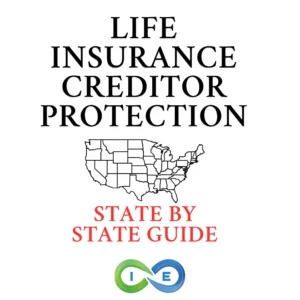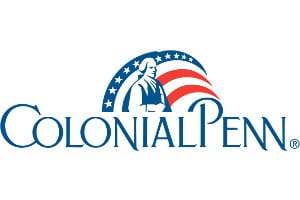Table of Contents
- Introduction to Indexed Universal Life Insurance
- How IUL Differs from Other Permanent Life Insurance
- Understanding IUL Interest Crediting Methods
- Floor Rates and Downside Protection
- The Annual Reset Feature Explained
- Can You Lose Money with IUL?
- IUL Cost Factors and Considerations
- Premium Payment Flexibility
- Who Should Consider IUL?
- How to Obtain an IUL Quote
- Is IUL Worth It? Final Considerations
Frequently Asked Questions About Indexed Universal Life
Indexed universal life insurance (IUL) is a flexible, yet complex product. This permanent life insurance coverage offers death benefit protection, as well as a way to grow and protect wealth on a tax-deferred basis. This means that IUL can be used as a financial safety net for loved ones in the future, as well as a method of saving and accessing funds while the insured is still alive.
Not all IUL policies are exactly the same, though, and understanding the nuances of how IULs work can be somewhat complex. With that in mind, it is important to understand how indexed universal life insurance works, and whether or not it may fit in with your financial and estate planning goals. This can start with answering some of the most common, frequently asked questions regarding IUL.
What makes indexed universal life (IUL) different from other types of permanent life insurance coverage?
| Feature | IUL | Whole Life | Variable Life |
|---|---|---|---|
| Cash Value Growth | Linked to market indexes with caps/floors | Fixed rate | Direct market investment |
| Downside Protection | Yes (0% or higher floor) | Yes | No |
| Premium Flexibility | Adjustable | Fixed | Typically adjustable |
| Growth Potential | Moderate (limited by caps) | Low to moderate | Highest potential |
There are actually several IUL features that make it stand out from other types of life insurance. First, while IUL includes a death benefit and cash value component, the return on the cash is linked to one or more underlying market indexes, such as the S&P 500. This can allow the cash to grow more than that in a whole life policy that offers just a fixed rate.
While the cash value growth in indexed universal life generally has limited upside potential, though (due to caps and/or participation rates), it is also protected from losses when the underlying index(es) performs poorly. This is much safer than variable life insurance where you often have unlimited upside potential, but also the risk of loss. So in many ways, IUL can provide a win-win scenario in terms of risk and reward.
Also, IUL allows for adjustable premium payments, meaning that you can modify your contributions (within certain parameters). This differs from whole life insurance, where you have a fixed premium amount over time.
How does the interest crediting work with indexed universal life insurance?
Knowing how IUL interest works can help to avoid any surprises when you look at your policy’s cash value statement. With indexed universal life, the cash value returns are credited, based on the performance of one or more selected market indexes, like the S&P 500 or Dow Jones Industrial Average (DJIA).
It is important to note that your money is not directly invested in the index, though. Rather, the insurance company uses particular crediting methods to determine how much interest will be added to the cash value.
These IUL crediting methods may include:
- Point-to-point – This method compares the value of the index at the beginning and at the end of a set time period.
- Monthly sum – This IUL crediting method adds up the monthly changes that take place in the index.
- Monthly average – With this method, the index’s value is averaged over a particular time frame.
Understanding Caps and Participation Rates
Example: How Caps Work
If your IUL policy has an 8% cap and the index returns 12%:
- Index Return: 12%
- Policy Cap: 8%
- Your Credited Interest: 8%
If the index returns 6%:
- Index Return: 6%
- Policy Cap: 8%
- Your Credited Interest: 6%
The pros and cons of IUL policies are that they will have methods in place that limit the upside potential of the cash value (although this is “balanced out” with protection from market losses). For instance, a cap is the maximum amount of interest that is credited. So, for example, if the policy imposes a cap of 8%, and the underlying index generates a 9% return in a given time period, the cash value is credited with 8%. (Note that if the underlying index returns 7% in a given period, then the cash value is credited with 7%).
Example: How Participation Rates Work
If your IUL policy has an 80% participation rate and the index returns 10%:
- Index Return: 10%
- Participation Rate: 80%
- Your Credited Interest: 8% (80% of 10%)
Likewise, if an IUL policy includes a participation rate, it means that the cash value will “participate” in a certain percentage of the underlying index’s growth. In this instance, if there is a participation rate of 80%, it means that the cash will be credited with 80% of its return.
Therefore, if the tracked index generates a 10% return in a given period, and the policy has an 80% participation rate, then the interest credited would be 8%. (This is because 80% of 10% is 8%).
Some indexed universal life insurance policies have both caps and participation rates included. With that in mind, it is important that you understand all of the parameters in a policy that you’re considering.
Want Personalized IUL Guidance?
Speak with Jason H., our IUL specialist who can help determine if an indexed universal life policy is right for your specific situation.
What are floor rates in an indexed universal life policy?
Even if the indexes being tracked in an IUL policy perform poorly, most of these policies have a “floor” rate. This ensures that the cash value does not decrease – even during a significant stock market correction.
The floor rate may be 0%, with many of today’s policies offering floors of between 0% and 2%. Given that, if the floor rate is higher than 0% – such as 1% or 2% – it is possible that the cash value could still generate some amount of growth – even during poor market conditions.
What is the annual reset feature associated with IUL?
Each year, the interest that is credited to an IUL policy’s cash value is locked in, and a new starting value is set for the next time period. With this annual reset feature, your principal and your previous gains cannot be lost in the future.
How Annual Reset Works
Let’s say you start with $100,000 in cash value:
- Year 1: Index returns 12%, cap is 10%, credited interest is 10%
New cash value: $110,000 - Year 2: Index returns -15%, floor is 0%, credited interest is 0%
Cash value remains at $110,000 - Year 3: Index returns 8%, credited interest is 8%
New cash value: $118,800
Each year’s gains are locked in and protected from future market downturns.
Can you lose money with IUL?
While your money is protected from market losses in the cash value of an IUL policy, there are still some items to be mindful of regarding potential risks with indexed universal life insurance.
For example, there are some fees involved in these policies, including:
- Administrative costs
- Mortality charges (i.e., the cost of the death benefit protection)
- Surrender fees (if you cancel the policy or withdraw more than the allotted maximum amount in the early years)
- Taxes (gains that are withdrawn from the indexed universal life insurance cash value are taxable)
In addition, if the cash value does not grow enough to cover the costs of the policy, you could be required to pay additional premiums in order to keep it active. Further, if you borrow money from the cash value, there are typically interest charges incurred. These may also reduce the amount of your cash value over time.
How much does indexed universal life insurance cost?
There are several factors that go into the pricing of an indexed universal life insurance policy, such as:
- Your age and health condition at the time of application
- Death benefit amount
- Administrative fees
- Cost of any additional riders added
- Insurance company offering the policy (some insurers charge different premium rates, even with the same amount of death benefit coverage, on IUL policies)
Who is a good candidate to purchase indexed universal life insurance?
Although indexed universal life insurance is not well suited for everyone, it may be a good fit for those who are seeking both death benefit protection and long-term tax-advantaged financial growth potential without the risk of market losses.
High Income Earners
If you have already “maxed out” the annual contributions to your IRA and/or employer sponsored retirement account, IUL offers the opportunity to add to your tax-advantaged savings. In addition, unlike these retirement accounts, IUL imposes no annual maximum contribution limits. Nor are there any required minimum distributions imposed at any age.
Tax-Free Retirement Planners
IUL policies may be structured such that loans can be used as tax-free cash flow. This, in turn, can add to your retirement income, while at the same time not impacting the taxability of other income sources like Social Security.
Pre-retirees Seeking Safety
Because of its downside protection, IUL can be a good vehicle for those who are approaching retirement and still want some growth, but do not want to lose their savings in the event of a market downturn.
Business Owners
IUL can also be used for business succession planning, as well as estate planning, as it can provide liquidity for buy-sell agreements and the payment of estate taxes.
How can you obtain a quote for indexed universal life?
You can obtain a quote for IUL by contacting an insurer that offers this type of coverage. Because all companies and policies can differ, though, it is often easier to work with a specialist who is not beholden to one specific company and who has access to numerous insurers. That way, you can instantly compare information and premium prices for multiple different options. From there, you can narrow down which one – if any – is right for you.
Want Personalized IUL Guidance?
Speak with Jason H., our IUL specialist who can help determine if an indexed universal life policy is right for your specific situation.
Is IUL Worth It?
Given all of the IUL pros and cons, this financial vehicle may or may not fit into your overall financial or estate plan. Given the recommendation that IUL is a long-term product, though, it is vital that you not purchase it prior to a complete evaluation.





